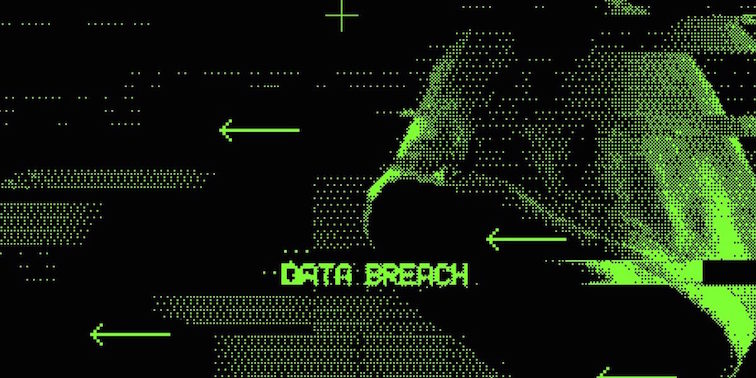This Alert uses the MITRE Adversarial Tactics, Techniques, and Common Knowledge (ATT&CK®) version 8 framework. See the ATT&CK for Enterprise version 8 for all referenced threat actor tactics and techniques.
The Cybersecurity and Infrastructure Security Agency (CISA) is aware of compromises of U.S. government agencies, critical infrastructure entities, and private sector organizations by an advanced persistent threat (APT) actor beginning in at least March 2020. This APT actor has demonstrated patience, operational security, and complex tradecraft in these intrusions. CISA expects that removing this threat actor from compromised environments will be highly complex and challenging for organizations.
One of the initial access vectors for this activity is a supply chain compromise of the following SolarWinds Orion products (see Appendix A).
- Orion Platform 2019.4 HF5, version 2019.4.5200.9083
- Orion Platform 2020.2 RC1, version 2020.2.100.12219
- Orion Platform 2020.2 RC2, version 2020.2.5200.12394
- Orion Platform 2020.2, 2020.2 HF1, version 2020.2.5300.12432
Note: CISA has evidence of additional initial access vectors, other than the SolarWinds Orion platform; however, these are still being investigated. CISA will update this Alert as new information becomes available.
On December 13, 2020, CISA released Emergency Directive 21-01: Mitigate SolarWinds Orion Code Compromise, ordering federal civilian executive branch departments and agencies to disconnect affected devices. Note: this Activity Alert does not supersede the requirements of Emergency Directive 21-01 (ED-21-01) and does not represent formal guidance to federal agencies under ED 21-01.
CISA has determined that this threat poses a grave risk to the Federal Government and state, local, tribal, and territorial governments as well as critical infrastructure entities and other private sector organizations. CISA advises stakeholders to read this Alert and review the enclosed indicators (see Appendix B).
Key Takeaways
- This is a patient, well-resourced, and focused adversary that has sustained long duration activity on victim networks.
- The SolarWinds Orion supply chain compromise is not the only initial infection vector this APT actor leveraged.
- Not all organizations that have the backdoor delivered through SolarWinds Orion have been targeted by the adversary with follow-on actions.
- Organizations with suspected compromises need to be highly conscious of operational security, including when engaging in incident response activities and planning and implementing remediation plans.
Click here for a PDF version of this report.
Overview
CISA is aware of compromises, which began at least as early as March 2020, at U.S. government agencies, critical infrastructure entities, and private sector organizations by an APT actor. This threat actor has demonstrated sophistication and complex tradecraft in these intrusions. CISA expects that removing the threat actor from compromised environments will be highly complex and challenging. This adversary has demonstrated an ability to exploit software supply chains and shown significant knowledge of Windows networks. It is likely that the adversary has additional initial access vectors and tactics, techniques, and procedures (TTPs) that have not yet been discovered. CISA will continue to update this Alert and the corresponding indicators of compromise (IOCs) as new information becomes available.
Initial Infection Vectors [TA0001]
CISA is investigating incidents that exhibit adversary TTPs consistent with this activity, including some where victims either do not leverage SolarWinds Orion or where SolarWinds Orion was present but where there was no SolarWinds exploitation activity observed. Volexity has also reported publicly that they observed the APT using a secret key that the APT previously stole in order to generate a cookie to bypass the Duo multi-factor authentication protecting access to Outlook Web App (OWA).[1] Volexity attributes this intrusion to the same activity as the SolarWinds Orion supply chain compromise, and the TTPs are consistent between the two. This observation indicates that there are other initial access vectors beyond SolarWinds Orion, and there may still be others that are not yet known.
SolarWinds Orion Supply Chain Compromise
SolarWinds Orion is an enterprise network management software suite that includes performance and application monitoring and network configuration management along with several different types of analyzing tools. SolarWinds Orion is used to monitor and manage on-premise and hosted infrastructures. To provide SolarWinds Orion with the necessary visibility into this diverse set of technologies, it is common for network administrators to configure SolarWinds Orion with pervasive privileges, making it a valuable target for adversary activity.
The threat actor has been observed leveraging a software supply chain compromise of SolarWinds Orion products[2] (see Appendix A). The adversary added a malicious version of the binary solarwinds.orion.core.businesslayer.dll into the SolarWinds software lifecycle, which was then signed by the legitimate SolarWinds code signing certificate. This binary, once installed, calls out to a victim-specific avsvmcloud[.]com domain using a protocol designed to mimic legitimate SolarWinds protocol traffic. After the initial check-in, the adversary can use the Domain Name System (DNS) response to selectively send back new domains or IP addresses for interactive command and control (C2) traffic. Consequently, entities that observe traffic from their SolarWinds Orion devices to avsvmcloud[.]com should not immediately conclude that the adversary leveraged the SolarWinds Orion backdoor. Instead, additional investigation is needed into whether the SolarWinds Orion device engaged in further unexplained communications. If additional Canonical Name record (CNAME) resolutions associated with the avsvmcloud[.]com domain are observed, possible additional adversary action leveraging the back door has occurred.
Based on coordinated actions by multiple private sector partners, as of December 15, 2020, avsvmcloud[.]com resolves to 20.140.0[.]1, which is an IP address on the Microsoft blocklist. This negates any future use of the implants and would have caused communications with this domain to cease. In the case of infections where the attacker has already moved C2 past the initial beacon, infection will likely continue notwithstanding this action.
SolarWinds Orion typically leverages a significant number of highly privileged accounts and access to perform normal business functions. Successful compromise of one of these systems can therefore enable further action and privileges in any environment where these accounts are trusted.
Anti-Forensic Techniques
The adversary is making extensive use of obfuscation to hide their C2 communications. The adversary is using virtual private servers (VPSs), often with IP addresses in the home country of the victim, for most communications to hide their activity among legitimate user traffic. The attackers also frequently rotate their “last mile” IP addresses to different endpoints to obscure their activity and avoid detection.
FireEye has reported that the adversary is using steganography (Obfuscated Files or Information: Steganography [T1027.003]) to obscure C2 communications.[3] This technique negates many common defensive capabilities in detecting the activity. Note: CISA has not yet been able to independently confirm the adversary’s use of this technique.
According to FireEye, the malware also checks for a list of hard-coded IPv4 and IPv6 addresses—including RFC-reserved IPv4 and IPv6 IP—in an attempt to detect if the malware is executed in an analysis environment (e.g., a malware analysis sandbox); if so, the malware will stop further execution. Additionally, FireEye analysis identified that the backdoor implemented time threshold checks to ensure that there are unpredictable delays between C2 communication attempts, further frustrating traditional network-based analysis.
While not a full anti-forensic technique, the adversary is heavily leveraging compromised or spoofed tokens for accounts for lateral movement. This will frustrate commonly used detection techniques in many environments. Since valid, but unauthorized, security tokens and accounts are utilized, detecting this activity will require the maturity to identify actions that are outside of a user’s normal duties. For example, it is unlikely that an account associated with the HR department would need to access the cyber threat intelligence database.
Taken together, these observed techniques indicate an adversary who is skilled, stealthy with operational security, and is willing to expend significant resources to maintain covert presence.
Privilege Escalation and Persistence [TA0004, TA0003]
The adversary has been observed using multiple persistence mechanisms across a variety of intrusions. CISA has observed the threat actor adding authentication tokens and credentials to highly privileged Active Directory domain accounts as a persistence and escalation mechanism. In many instances, the tokens enable access to both on-premise and hosted resources. Microsoft has released a query that can help detect this activity.[4]
Microsoft reported that the actor has added new federation trusts to existing infrastructure, a technique that CISA believes was utilized by a threat actor in an incident to which CISA has responded. Where this technique is used, it is possible that authentication can occur outside of an organization’s known infrastructure and may not be visible to the legitimate system owner. Microsoft has released a query to help identify this activity.[5]
User Impersonation
The adversary’s initial objectives, as understood today, appear to be to collect information from victim environments. One of the principal ways the adversary is accomplishing this objective is by compromising the Security Assertion Markup Language (SAML) signing certificate using their escalated Active Directory privileges. Once this is accomplished, the adversary creates unauthorized but valid tokens and presents them to services that trust SAML tokens from the environment. These tokens can then be used to access resources in hosted environments, such as email, for data exfiltration via authorized application programming interfaces (APIs).
CISA has observed in its incident response work adversaries targeting email accounts belonging to key personnel, including IT and incident response personnel.
These are some key functions and systems that commonly use SAML.
- Hosted email services
- Hosted business intelligence applications
- Travel systems
- Timecard systems
- File storage services (such as SharePoint)
Detection: Impossible Logins
The adversary is using a complex network of IP addresses to obscure their activity, which can result in a detection opportunity referred to as “impossible travel.” Impossible travel occurs when a user logs in from multiple IP addresses that are a significant geographic distance apart (i.e., a person could not realistically travel between the geographic locations of the two IP addresses during the time period between the logins). Note: implementing this detection opportunity can result in false positives if legitimate users apply virtual private network (VPN) solutions before connecting into networks.
Detection: Impossible Tokens
The following conditions may indicate adversary activity.
- Most organizations have SAML tokens with 1-hour validity periods. Long SAML token validity durations, such as 24 hours, could be unusual.
- The SAML token contains different timestamps, including the time it was issued and the last time it was used. A token having the same timestamp for when it was issued and when it was used is not indicative of normal user behavior as users tend to use the token within a few seconds but not at the exact same time of issuance.
- A token that does not have an associated login with its user account within an hour of the token being generated also warrants investigation.
Operational Security
Due to the nature of this pattern of adversary activity—and the targeting of key personnel, incident response staff, and IT email accounts—discussion of findings and mitigations should be considered very sensitive, and should be protected by operational security measures. An operational security plan needs to be developed and socialized, via out-of-band communications, to ensure all staff are aware of the applicable handling caveats.
Operational security plans should include:
- Out-of-band communications guidance for staff and leadership;
- An outline of what “normal business” is acceptable to be conducted on the suspect network;
- A call tree for critical contacts and decision making; and
- Considerations for external communications to stakeholders and media.
MITRE ATT&CK® Techniques
CISA assesses that the threat actor engaged in the activities described in this Alert uses the below-listed ATT&CK techniques.
- Query Registry [T1012]
- Obfuscated Files or Information [T1027]
- Obfuscated Files or Information: Steganography [T1027.003]
- Process Discovery [T1057]
- Indicator Removal on Host: File Deletion [T1070.004]
- Application Layer Protocol: Web Protocols [T1071.001]
- Application Layer Protocol: DNS [T1071.004]
- File and Directory Discovery [T1083]
- Ingress Tool Transfer [T1105]
- Data Encoding: Standard Encoding [T1132.001]
- Supply Chain Compromise: Compromise Software Dependencies and Development Tools [T1195.001]
- Supply Chain Compromise: Compromise Software Supply Chain [T1195.002]
- Software Discovery [T1518]
- Software Discovery: Security Software [T1518.001]
- Create or Modify System Process: Windows Service [T1543.003]
- Subvert Trust Controls: Code Signing [T1553.002]
- Dynamic Resolution: Domain Generation Algorithms [T1568.002]
- System Services: Service Execution [T1569.002]
- Compromise Infrastructure [T1584]
SolarWinds Orion Owners
Owners of vulnerable SolarWinds Orion products will generally fall into one of three categories.
- Category 1 includes those who do not have the identified malicious binary. These owners can patch their systems and resume use as determined by and consistent with their internal risk evaluations.
- Category 2 includes those who have identified the presence of the malicious binary—with or without beaconing to
avsvmcloud[.]com. Owners with malicious binary whose vulnerable appliances only unexplained external communications are with avsvmcloud[.]com—a fact that can be verified by comprehensive network monitoring for the device—can harden the device, re-install the updated software from a verified software supply chain, and resume use as determined by and consistent with a thorough risk evaluation.
- Category 3 includes those with the binary beaconing to
avsvmcloud[.]com and secondary C2 activity to a separate domain or IP address. If you observed communications with avsvmcloud[.]com that appear to suddenly cease prior to December 14, 2020— not due to an action taken by your network defenders—you fall into this category. Assume the environment has been compromised, and initiate incident response procedures immediately.
Compromise Mitigations
If the adversary has compromised administrative level credentials in an environment—or if organizations identify SAML abuse in the environment, simply mitigating individual issues, systems, servers, or specific user accounts will likely not lead to the adversary’s removal from the network. In such cases, organizations should consider the entire identity trust store as compromised. In the event of a total identity compromise, a full reconstitution of identity and trust services is required to successfully remediate. In this reconstitution, it bears repeating that this threat actor is among the most capable, and in many cases, a full rebuild of the environment is the safest action.
SolarWinds Orion Specific Mitigations
The following mitigations apply to networks using the SolarWinds Orion product. This includes any information system that is used by an entity or operated on its behalf.
Organizations that have the expertise to take the actions in Step 1 immediately should do so before proceeding to Step 2. Organizations without this capability should proceed to Step 2. Federal civilian executive branch agencies should ignore the below and refer instead to Emergency Directive 21-01 (and forthcoming associated guidance) for mitigation steps.
- Step 1
- Forensically image system memory and/or host operating systems hosting all instances of affected versions of SolarWinds Orion. Analyze for new user or service accounts, privileged or otherwise.
- Analyze stored network traffic for indications of compromise, including new external DNS domains to which a small number of agency hosts (e.g., SolarWinds systems) have had connections.
- Step 2
- Affected organizations should immediately disconnect or power down affected all instances of affected versions of SolarWinds Orion from their network.
- Additionally:
- Block all traffic to and from hosts, external to the enterprise, where any version of SolarWinds Orion software has been installed.
- Identify and remove all threat actor-controlled accounts and identified persistence mechanisms.
- Step 3
- Only after all known threat actor-controlled accounts and persistence mechanisms have been removed:
See Joint Alert on Technical Approaches to Uncovering and Remediating Malicious Activity for more information on incident investigation and mitigation steps based on best practices.
CISA will update this Alert, as information becomes available and will continue to provide technical assistance, upon request, to affected entities as they work to identify and mitigate potential compromises.




